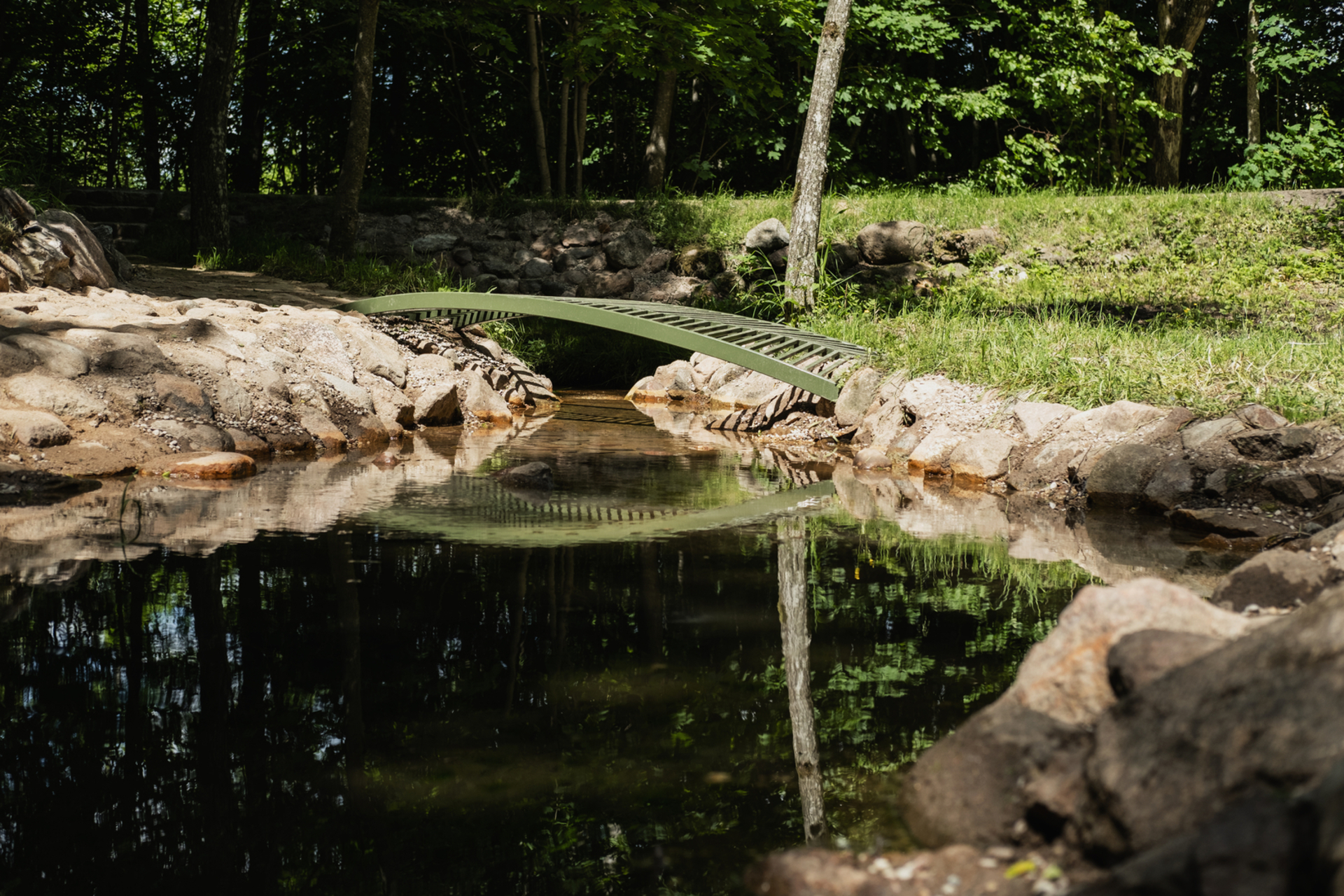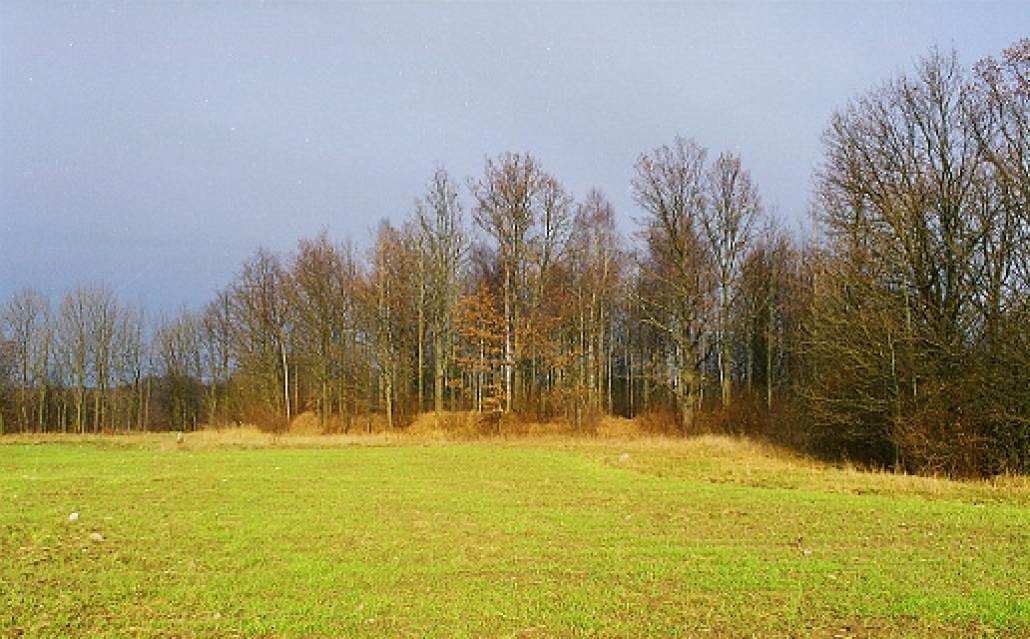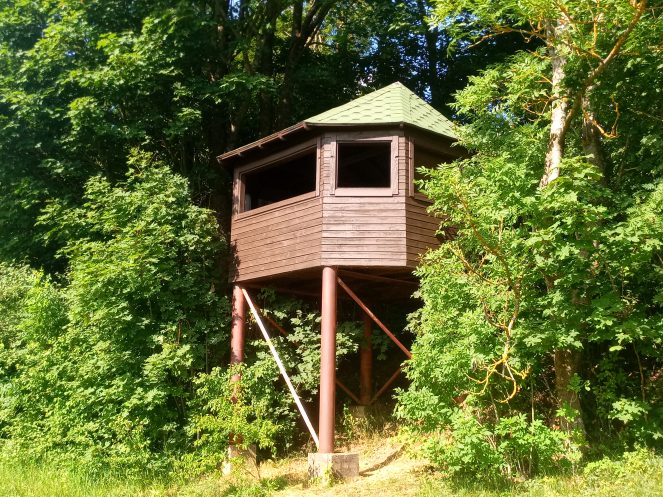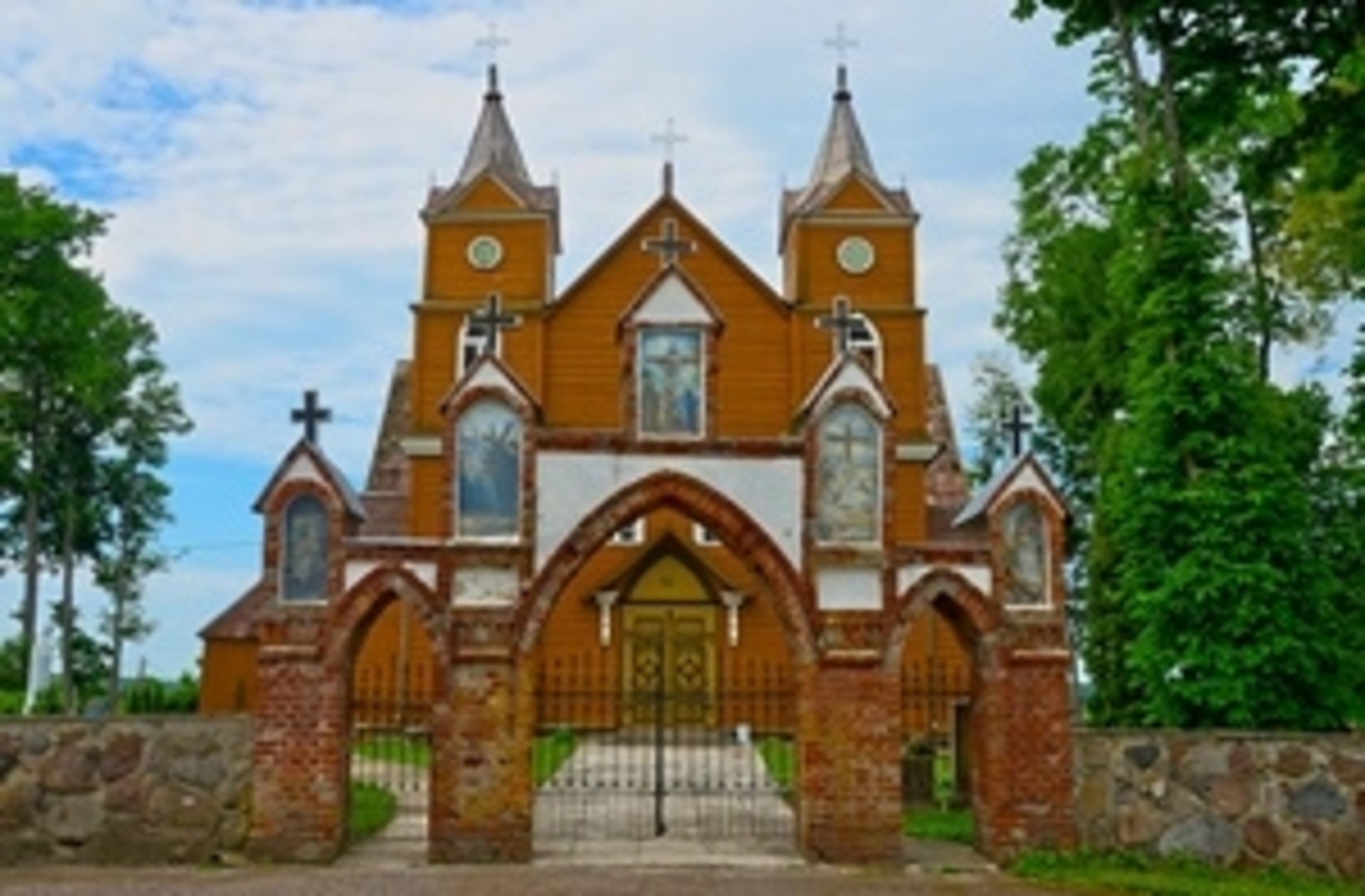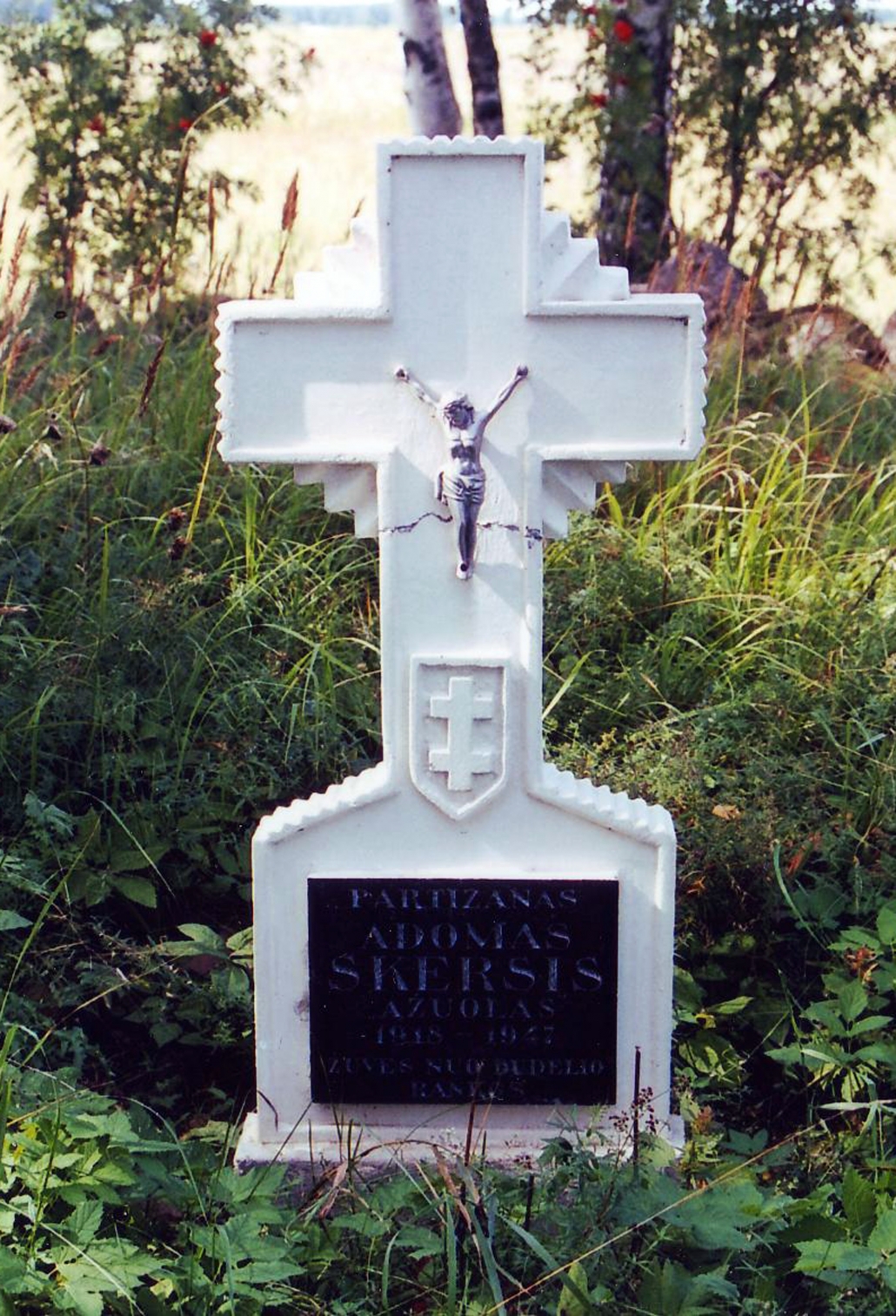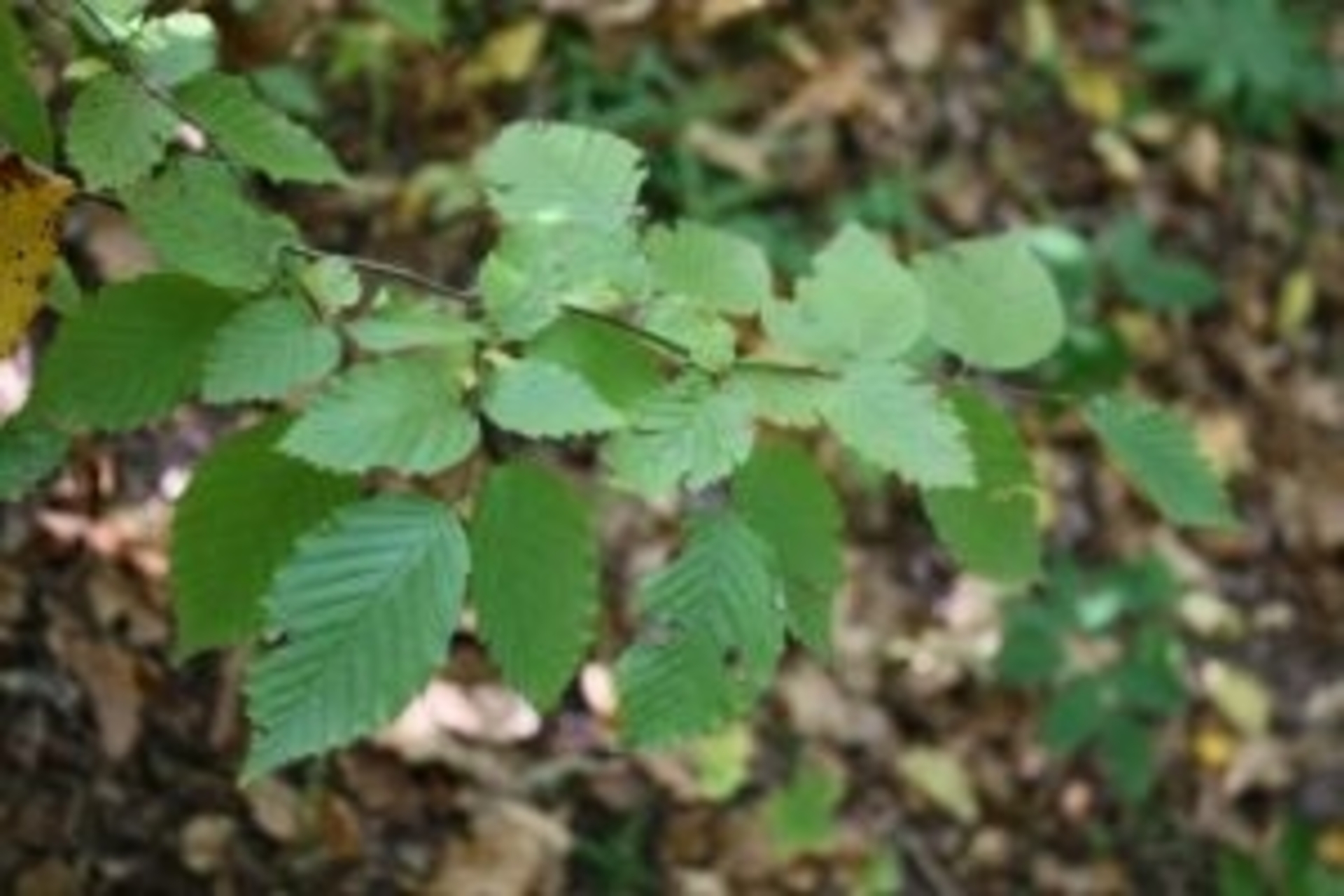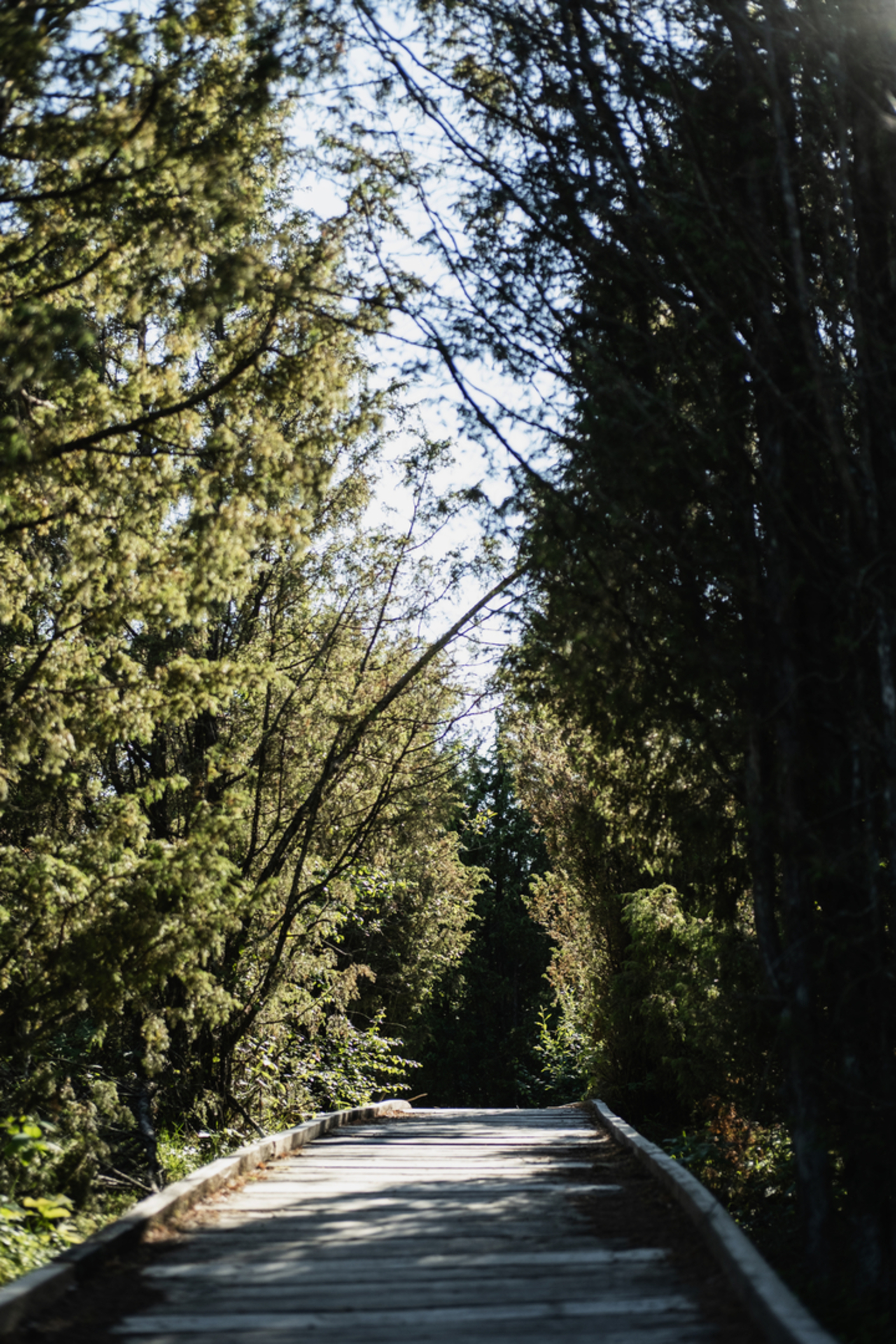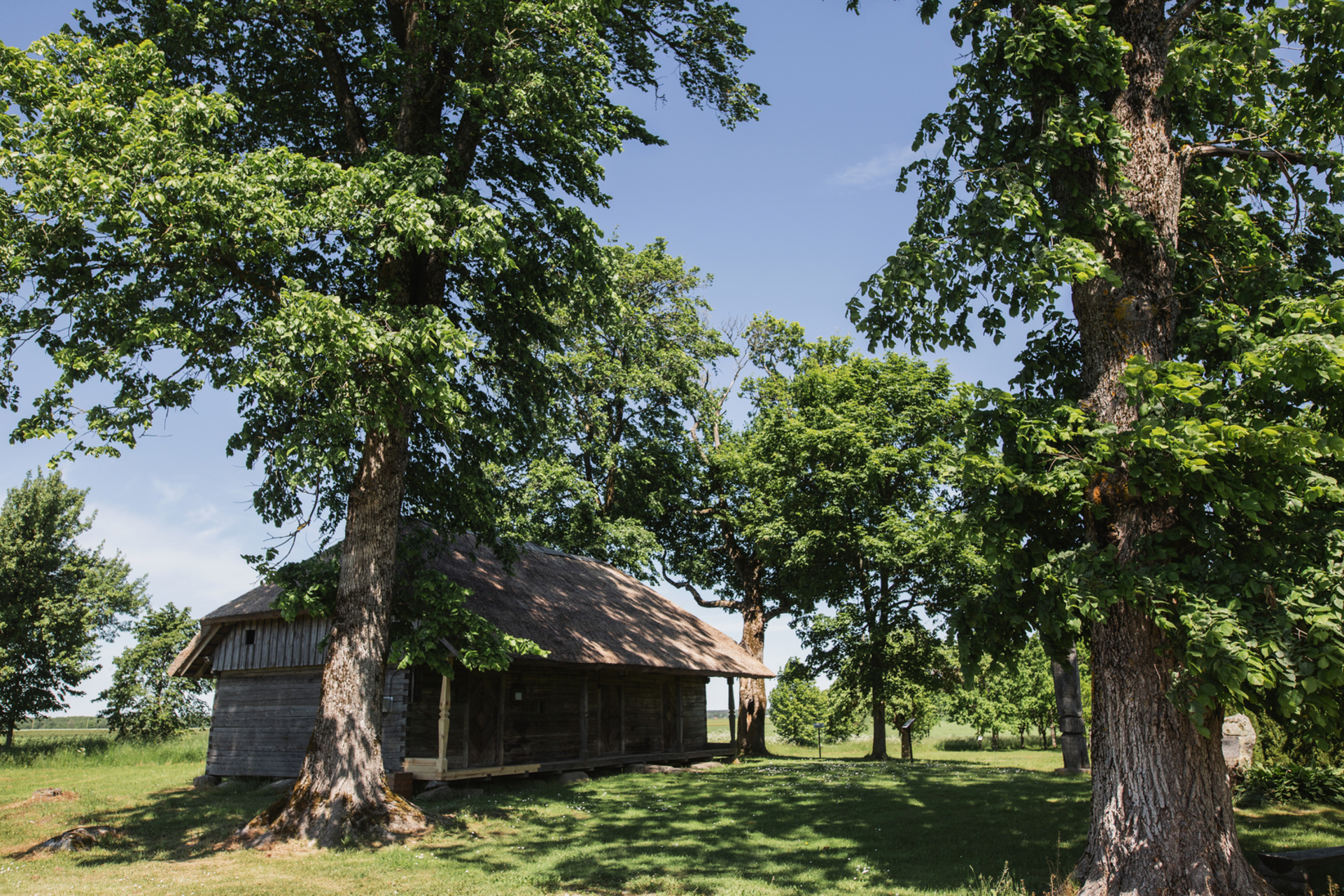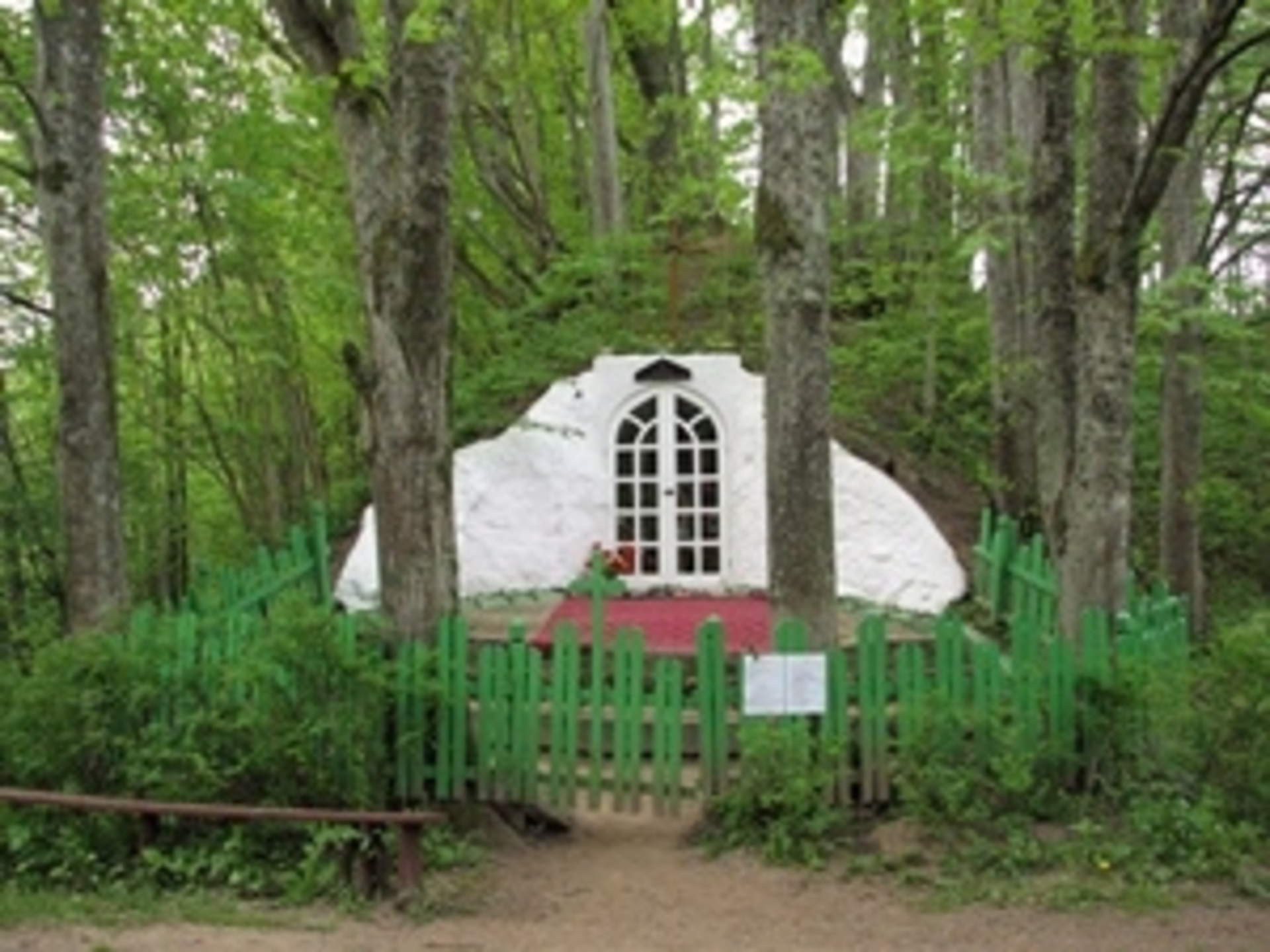Užluobė Lourdes Shrine

108

0

0
In the village of Užluobė, near the Šarkė Manor, stands the Lourdes shrine, shrouded in legend. Its story begins with a farmer named Juozas Žadauskas, who, having lost his horses, prayed to God for their return. One night, an angel appeared to him in a dream, instructing him to build a Lourdes shrine on the cliff by the Luoba River as a sign of God’s mercy. Built between 1936 and 1938, the Lourdes shrine became a local place of worship, featuring a chapel, a statue of the Blessed Virgin Mary, and a well blessed with water from Lourdes, France. Every May, pilgrims gather here, with Holy Mass celebrated on the last Sunday of the month.
Info
-

Historical Heritage
-
Whats new?
Nearby attractions
Nearest museums

 Entertainment
Entertainment
 Food establishments
Food establishments





























 56.257325, 21.637829
56.257325, 21.637829
 Get directions
Get directions








